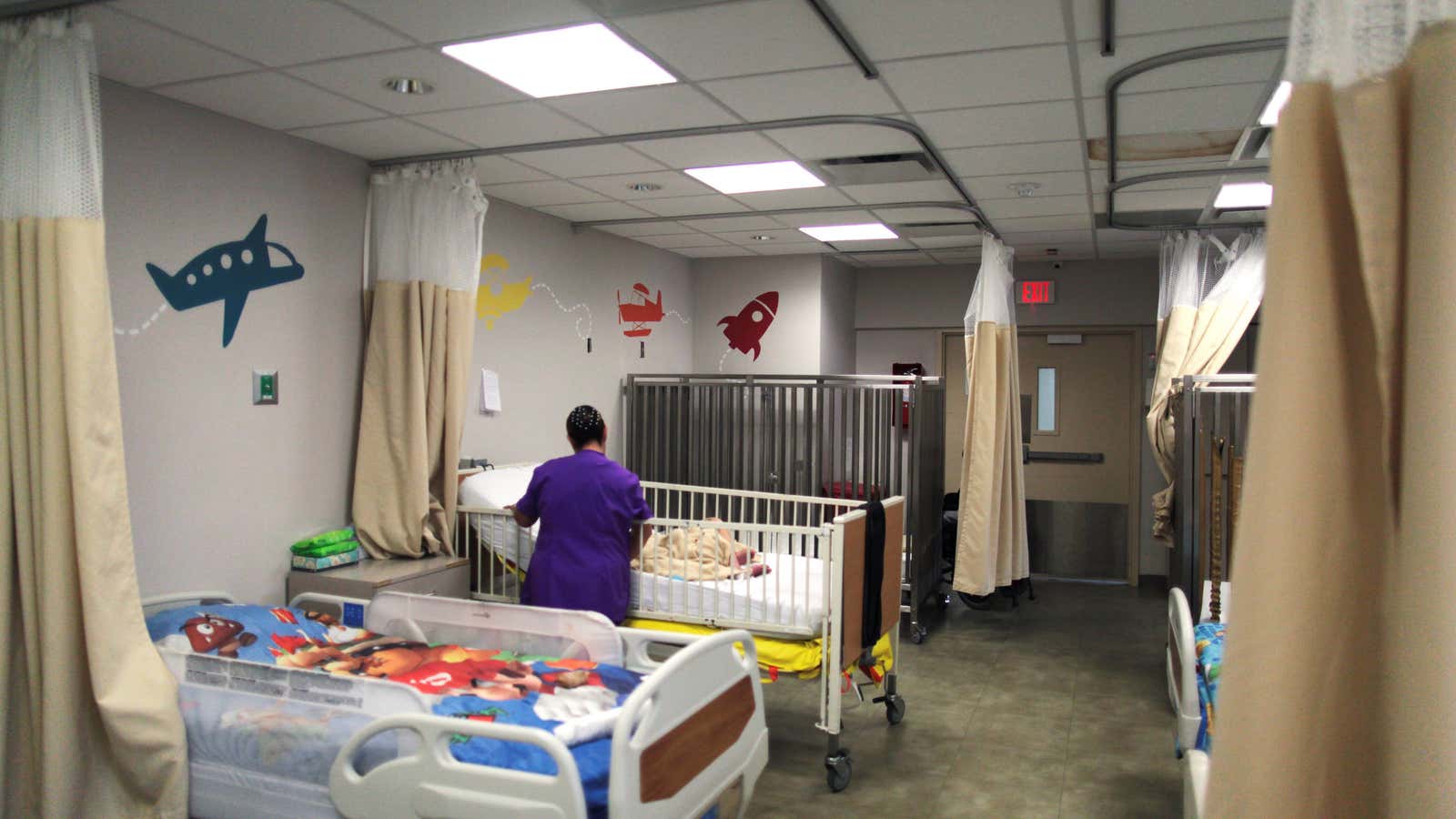About nine months after Hurricane Irma, one of the strongest Atlantic basin hurricanes ever recorded, hit Florida and shut down power for millions, the state’s hospitals say they are experiencing a different kind of storm—a mini baby-boom.
Osceola Regional Medical Center in Kissimmee has seen just over a 5% increase in births since May, according to Jenni Lash, director of women’s and children’s services at the center. “It’s a pretty common phenomena after hurricanes,” she told Quartz.
And not for the reason you may be assuming.
As the legends go, major natural disasters and other events that keep people indoors are followed by increased births. That’s why we also have “blizzard babies,” and “blackout babies.” Washington DC even has its own spin: furlough fertility, for what happens when the federal government shuts down, giving federal workers nothing but time—which some apparently use to procreate. Almost every major natural disaster in the US inevitably has been followed by headlines claiming a spike in births. It was the case for Hurricane Sandy in 2013, the freak snowstorms in Buffalo, NY, in 2015, and hurricanes Irma, Maria, and Harvey in 2017.
But the science on this can be pretty shaky.
Do disasters lead to increased births?
There’s ample supposed anecdotal evidence from hospitals, yet very few studies have been able to prove any causal relationship between natural disasters and birth rates. The seminal paper was a 1970 study by University of North Carolina professor J. Richard Udry, who studied the great New York City blackout of 1965 and concluded that there was no positive fertility effect.
Still, other studies with larger sample sizes have reached different conclusions. A 2008 study in the Journal of Population Economics looked at birth and storm-advisory data from 47 Atlantic and Gulf Coast counties over a period of six years. The researchers found that low-severity hurricanes and tropical storms were associated with increased birth rates, while hurricane warnings led to a decline in births nine months later. Most of this effect, however, was observed among couples who already had at least one child before the natural disaster, leading researchers to conclude that ”the elasticity of demand for children is relatively inelastic for first children but becomes more elastic after couples have their first child.” Meaning that, in general, the timing for having a first child is less flexible than the timing for a second or a third because couples who already have a child are less concerned with preventing a pregnancy.
That study appears to support some seemingly conventional wisdom: During low-intensity natural disasters, couples are often stranded at home, with no power, and limited choices for how to spend their time. However, the same medical professionals who note the upticks will tell you that it’s not that simple. ”A lot of it isn’t what you think,” Lash said, laughing. “If the electricity is out at home, then it’s also out at the pharmacy where they get their birth control refills, or their clinic, or their doctor’s office where they get their [Depo-Provera] shots,” she explained, attributing the higher birth rates to the difficulty of accessing birth control during natural disasters.
The history of the disaster-baby legend
The first well-documented instance of disaster baby-boom coverage was a series of three August 1966 New York Times articles reporting that a one-day lapse in electricity on the night of Nov. 9, 1965 had led to a sharp increase in births at local hospitals the following summer. In response to those claims, Udry conducted his now-famous study, which found no relationship between the blackout and New York City birth rates.
Far from quelling the debate, the Udry study inspired more research. Studies from 2000 to 2015 looked at the question using bigger sample sizes. In 2005 study, University of Oklahoma psychologist J.L. Rodgers found an association between the 1995 Oklahoma City bombing and fertility rates in surrounding counties nine months later. That’s not an an anomaly: A 2015 study, which measured the impact of the 2004 Indian Ocean tsunami, found that fertility rates increased in Indonesia after the disaster that claimed hundreds of thousands of lives. That’s for two main reasons: Mothers who lost children in the tsunami were significantly more likely to bear additional children and women without children began having children earlier where tsunami-related mortality rates were higher.
The available studies don’t really back up what many observers believe to be true about the disaster baby boom. And yet, the myth persists. As Udry stated about the effect of the 1965 blackout, it “is evidently pleasing to many people to fantasize that when people are trapped by some immobilizing event which deprives them of their usual activities, most will turn to copulation.”
That doesn’t mean it’s true.
